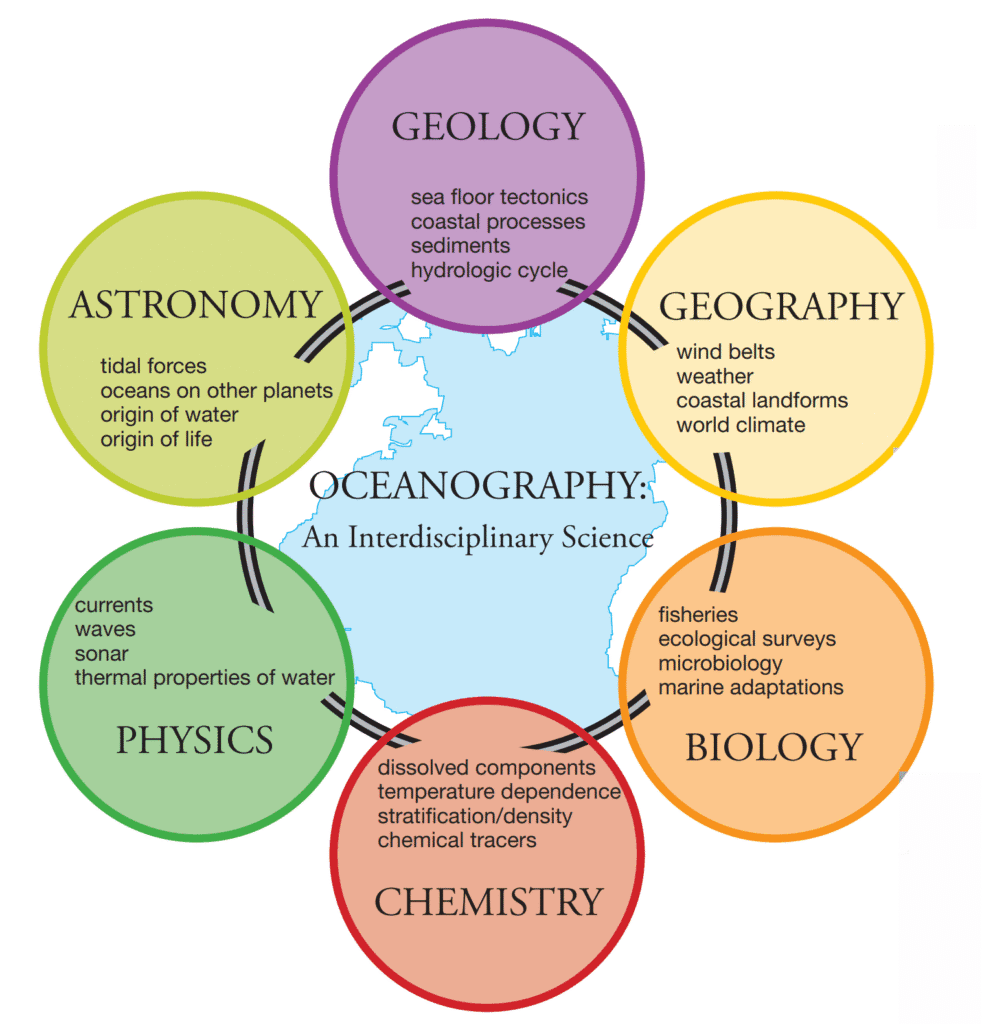What is Oceanography
Oceanography (from ocean = the marine environment, and graphy = description) is, in its most literal interpretation, the description of the marine environment. Although the term originated during the 1870s, coinciding with the early stages of systematic oceanic investigation, this definition inadequately captures the comprehensive scope encompassed by the discipline. Oceanography extends far beyond mere observational description; it is more precisely characterized as the scientific exploration of all aspects related to the marine environment.
Therefore, it may be more accurately referred to as oceanology (ocean = the marine environment, ology = the study of). However, convention has long favored the term oceanography, which is also commonly known as marine science. This field integrates the examination of oceanic waters, the diverse lifeforms residing within, and the underlying (and not entirely solid) Earth.

Since prehistoric eras, humankind has relied upon the oceans for transportation and as a vital source of nutrition. Conversely, the scientific investigation of oceanic processes only began in earnest during the 1930s, initially driven by the pursuit of submarine petroleum. This effort expanded substantially throughout World War II, when strategic emphasis shifted toward naval warfare. The combined recognition by governments of marine issues’ significance, their financial commitment to research, the proliferation of specialized ocean scientists, and the advancement in technological apparatus have collectively enabled a scale and complexity of oceanic research that was previously unfeasible.
Consider the logical assumption that professional fishers target regions where oceanic processes yield favorable fishing conditions. The intricate interplay among marine geology, chemical processes, physical dynamics, and biological systems in generating such productive zones remained largely enigmatic until recent decades. With the integration of advanced technology, researchers across these scientific disciplines have begun to systematically explore the marine environment. One notable realization emerging from these investigations is the profound impact of human activity on ocean systems. Consequently, a growing body of contemporary research is devoted to documenting such anthropogenic influences.
Primary branches of Oceanography
Oceanography is generally categorized into several academic subdisciplines, each contributing a fundamental perspective. This volume focuses on four primary branches:
- Geological oceanography, dedicated to understanding the structure and evolution of the sea floor, the formation of its features, and the depositional history of marine sediments
- Chemical oceanography, which investigates the chemical makeup and properties of seawater, techniques for extracting specific elements, and the consequences of contaminants
- Physical oceanography, concerned with the dynamics of waves, tides, and currents; the ocean-atmosphere interactions that modulate climate and weather patterns; and the behavior of light and sound transmission in marine contexts
- Biological oceanography, which focuses on the diversity of marine organisms, their ecological relationships, adaptive strategies, and the development of sustainable harvesting practices
Reference: All images and content are taken from Essentials of Oceanography by Alan P. Trujillo and Harold V. Thurman, 12th Edition.
